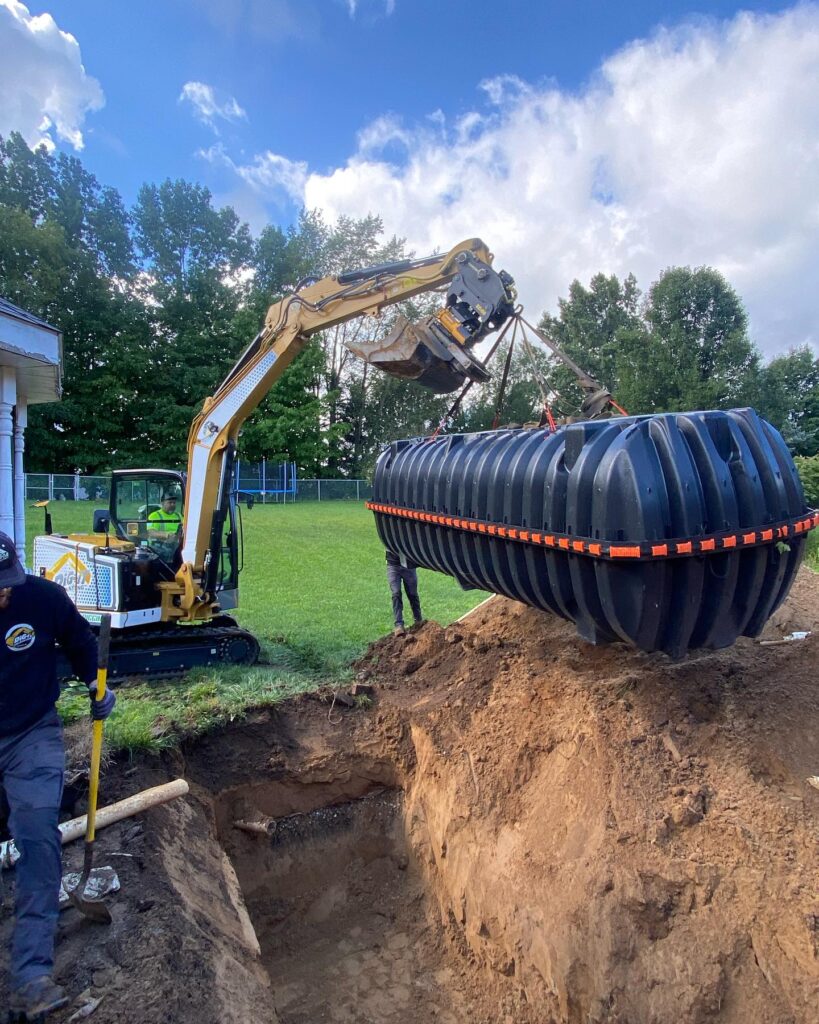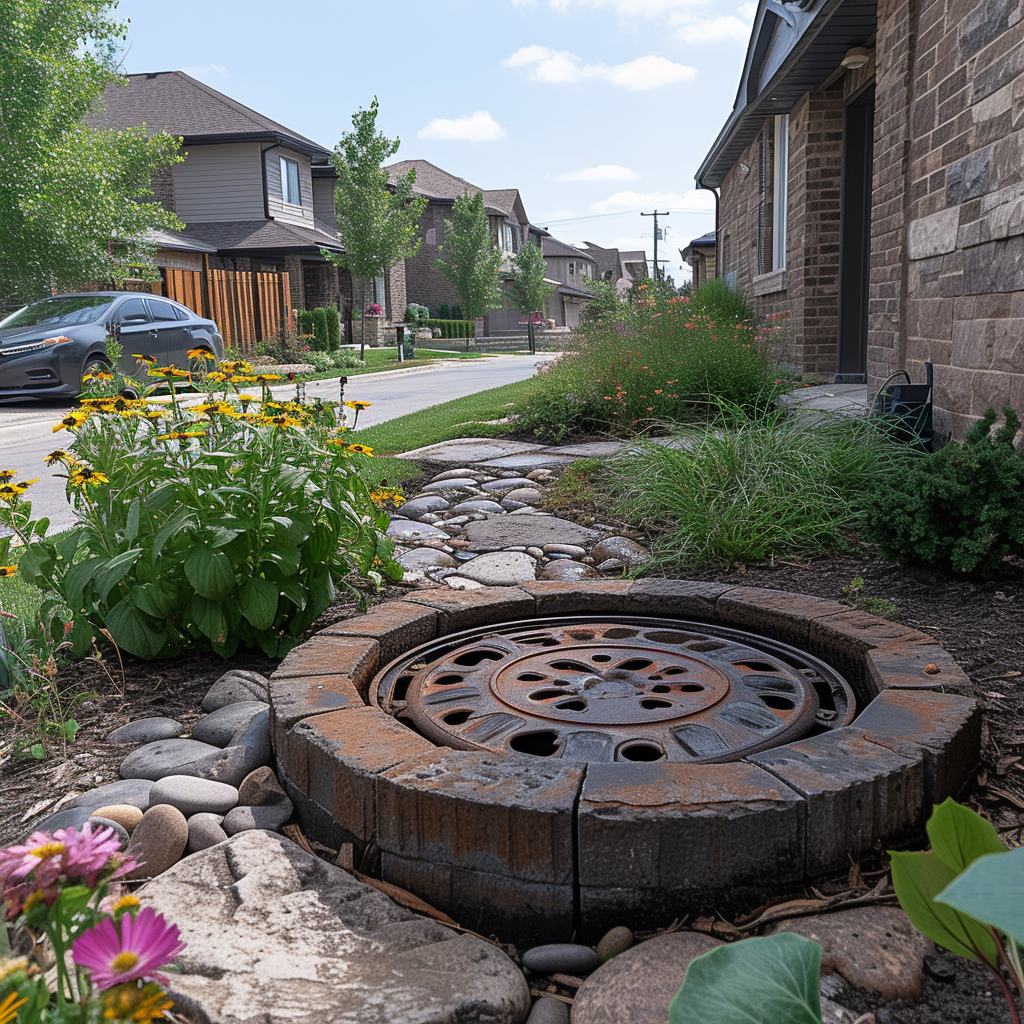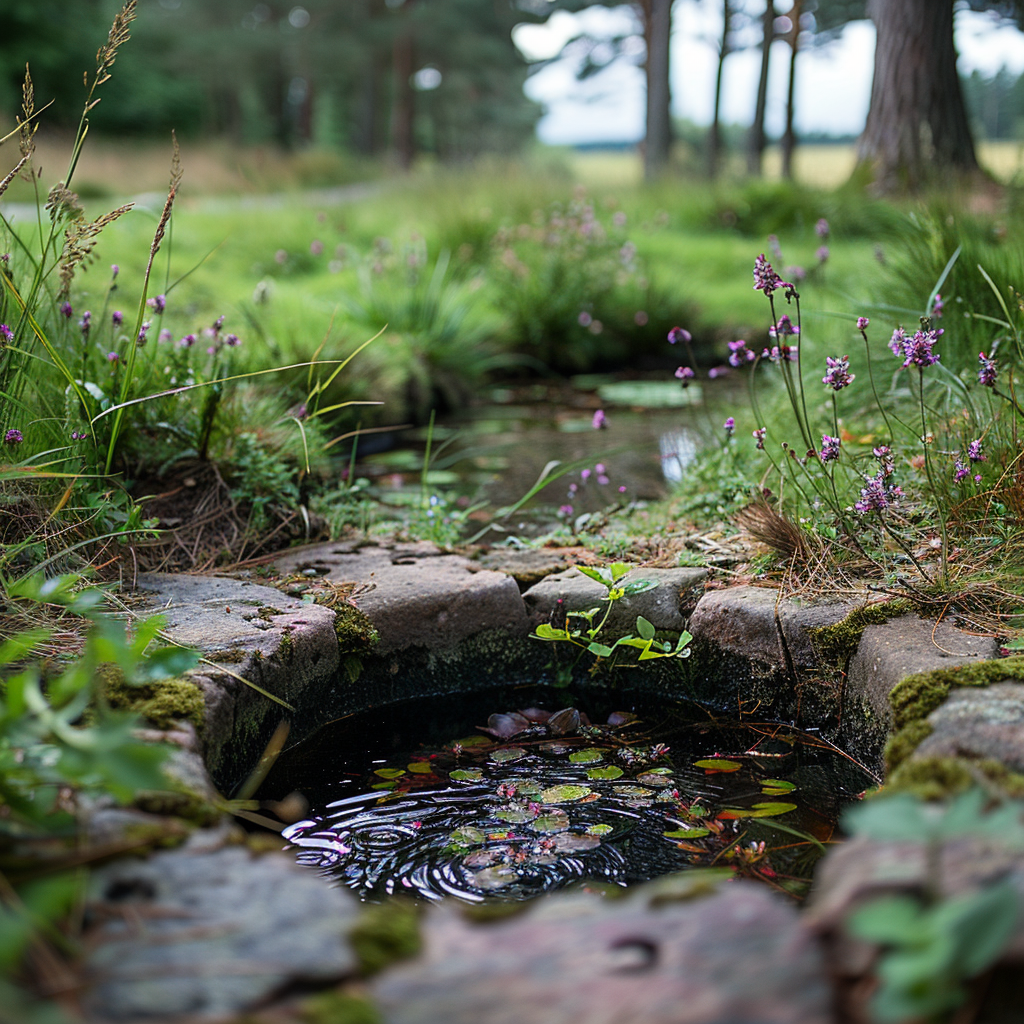Key points
• Household Size: How big your septic tank needs to be depends on how many bedrooms you have. Usually, a three-bedroom house needs at least a 1,000-gallon tank since the number of bedrooms usually shows how many people might live there and how much wastewater they’ll make.
• Water Usage Patterns: The size of your septic tank also hinges on how much water each person uses daily, plus any high-usage appliances or fixtures. If you’re using more water, you’ll need a bigger tank to handle all the wastewater.
• Local Regulations: There are rules where you live that might tell you the smallest septic tank you can have or if you need a special kind of system. Make sure to check with the local health department or other regulatory bodies so everything’s above board.
Contents
- 1 Key points
- 2 Importance of Correct Sizing
- 3 Understanding What Affects Septic Tank Size
- 4 Choosing the Right Septic Tank Size
- 5 Household Size and Number of Bedrooms
- 6 Average Daily Wastewater Generation
- 7 Understanding How Soil Affects Septic Systems
- 8 Local Regulations and Environmental Considerations
- 9 Minimum Size Requirements
- 10 Standard Septic Tank Sizes and Their Corresponding Households
- 11 Changes for Tough Waste
- 12 Understanding Local Building Rules
- 13 Understanding Septic System Permits and Checks
- 14 Professional Assessment and Installation
- 15 Frequently Asked Questions (FAQ)
Importance of Correct Sizing

Choosing the right size for your septic tank is important. If it’s too small, you’ll face issues like overworking the system and getting a lot of sludge fast. This can make the system break down. If your tank is too big, the treatment might not be good enough. The waste breakdown won’t be as efficient because there’s not enough incoming flow. Getting the size right means your system will work well, last longer, and keep groundwater clean.
When you’re figuring out how big your septic tank should be, it’s not enough to only think about what you need right now. You should also consider if you might need more space for waste in the future because of things like more people living in your house or an addition to your home. It’s a good idea to go a bit bigger with your septic system so you’re ready for any changes that could increase your water usage.
Understanding What Affects Septic Tank Size
A few key factors play into deciding the right size for your septic tank. These include how many people live in your home, how many bedrooms you have, how much water you use every day, and what kind of soil is on your property. Local laws also matter a lot because they can have rules on how big your tank should be based on things like how many people could potentially live in your house.-
Household Size: More folks in the house means more water goes down the drain. So, big families need big tanks.
Number of Bedrooms: The number of bedrooms can show how many people could live there, which helps figure out tank size.
Daily Water Usage: The amount of water a household uses each day affects how much sewage goes into the system.
Soil Type: If the soil absorbs well, you might get away with a smaller tank.- Local Regulations: Rules where you live might demand tanks to be a certain size depending on how many people could live there.
Your house makes dirty water from places like the sink, toilet, laundry, and shower. This dirty water is full of stuff like old food, germs, dirt, and sometimes harmful chemicals. A septic tank’s job is really important – it handles all this waste the right way to keep people healthy and protect nature.
Choosing the Right Septic Tank Size
When it comes to picking a septic tank size, you have to think about how many bedrooms you’ve got and how much wastewater you use every day. Local laws usually have rules on the smallest size you can have. Getting a pro to take a look makes sure you meet these standards and get a septic system that’s big enough to handle your waste properly.
Household Size and Number of Bedrooms

Choosing the right septic tank size is based on how many people live in your house and how many bedrooms you have. More people means more wastewater, and that requires a larger tank to handle it all.
Usually, experts say you should start with a small tank for homes with one or two bedrooms. Then, get a bigger one for every extra bedroom. So it’s important to think about both the number of folks at home now and any that might be added later when picking the right septic tank size.
Average Daily Wastewater Generation
How much water we use every day at home affects how big our septic tank needs to be. We’re talking about all the water that ends up going down the drain, whether it’s from taking a shower, doing dishes, flushing the toilet, or running the washing machine.
On average, one person will use between 70 and 100 gallons of water daily. To figure out your household’s wastewater output, just multiply that range by the number of people living there. You’ll want to get a tank that’s roomy enough to manage this steady flow, so there’s space for solids to settle down and you don’t put too much strain on the system.
Understanding How Soil Affects Septic Systems
The type of dirt you have on your land is really important when it comes to how big your septic tank should be. This is because it affects how fast wastewater sinks into the earth and gets clean. If your soil soaks up water fast, you might get away with a smaller septic tank, as the waste water spreads out better.
But if you’ve got thick soil, you’ll probably need a bigger system to make sure the water gets filtered right. The way you set up where the waste goes, often called a leach field, matters too. A well-thought-out leach field means waste water gets treated well before it goes back into the ground.
Local Regulations and Environmental Considerations
Local health departments and environmental agencies play a big part in setting septic tank size rules. These authorities create standards to keep people healthy and protect the environment. It’s important to check these local rules since they can change the size of your tank, how you put it in, and how you take care of it. You also need to consider things like how close you are to lakes or rivers, the level of the groundwater, and other environmental issues when you pick your septic system size.
To figure out the right septic tank size for your house, you need to crunch some numbers. Start by guessing how much wastewater your home makes every day, thinking about the number of people living there and how much water they use. Then, use that estimate to work out a daily wastewater amount. This helps you pick a tank that’s the right size, based on how many people live there and how much water they use. If you have a garbage disposal in your kitchen, you’ll probably need a bigger tank to deal with the extra waste.
And remember to think about times when you might use your water differently, like if you have guests over. This helps make sure your tank is not too small or too big.
Estimating Daily Wastewater Flow Rates
Figuring out your home’s daily wastewater starts with counting the people in your house. This number is like a starting point for guessing how much water everyone uses. Usually, there’s an average amount that each person uses per day, which gives you an early total. Then, tweak those numbers to better fit what really happens at your place.
Sizing Guidelines Based on Occupancy and Usage
When choosing a septic tank size, look at how many people live in your house and their usual water habits. Building codes and environmental laws often give numbers to help make these choices, balancing the tank volume with people’s needs. This way, you avoid having a tank that’s too full or spending money on one that’s too big.
Additional Capacity for Garbage Disposal Use
If your kitchen has a garbage disposal, it puts more solid stuff into the septic system. So you’ll need to think about this when working out tank sizes. Usually, add about 20% more to the standard tank size to cover the extra waste. This extra space stops problems caused by more solids getting into the system.
Considerations for Irregular Usage Patterns
Different routines at home or visitors now and then can put extra pressure on your septic system. You should get a tank with a little more room for times like this. Having some spare space means your system will still work well when there’s more waste than usual, which stops issues or breakdowns.
Minimum Size Requirements
Choosing the right size for a septic tank is key to managing waste well on your place. Generally, how big it should be is tied to how many bedrooms you’ve got. Local health departments or building codes often set these minimum sizes. They do this to ensure that your tank can handle the amount of wastewater you produce.
Standard Septic Tank Sizes and Their Corresponding Households

Septic tanks come in different sizes, typically based on how many bedrooms a home has. Below are the usual tank sizes and the size of the home they are best for:
- 1 to 2 Bedrooms: A 750-gallon tank usually works well for homes with one or two bedrooms.
- 3 Bedrooms: A home with three bedrooms will often need a 1,000-gallon tank.
- 4 Bedrooms: If you have a four-bedroom home, you’ll probably want a 1,250-gallon tank.
- 5 or More Bedrooms: For bigger homes with five bedrooms or more, you should start with tanks that are 1,500 gallons and go up from there if you have more bedrooms.
Changes for Tough Waste

If you’re dealing with waste that’s harder to handle, like really strong waste, you need to think about that when choosing a tank size. This kind of waste, usually found in businesses or homes with fancy gear that spits out tougher gunk, has more solid stuff or other things mixed in it. If this sounds familiar, you might have to go for a bigger septic tank. That way, you can make sure it can deal with all the waste without messing up the system or harming nature.
Start by checking the smallest size your septic tank should be based on how many bedrooms you’ve got. But keep an eye out for unusual situations, like dealing with heavy-duty waste. That sort of thing could mean you’ll need a grander tank to keep things running smooth. Picking the right size for your septic system isn’t just good for keeping it in shape. It also helps look after public health and keeps the planet clean.
When Your Home is More Than Just a Home
If you use part of your property for other stuff, like running a business from home or having a big workshop, you’ll likely need a larger septic tank. That’s because these activities can really amp up the amount of wastewater you’re dealing with.
New Tech Can Change the Game
There are some fancy new septic systems out there that can actually change how big your tank needs to be. Things like aerobic treatment units or sand filters clean wastewater super well, and sometimes they let you have a smaller tank than usual.
To wrap it up, picking out the size of your septic tank means looking at what you need right now and guessing what you might need down the line. Remember to think about how using your space for work or other non-home stuff could mean more waste, and that new wastewater tech could either shrink or expand your size requirements. Definitely talk to an expert to make sure you’re following local rules and making the best choice for your system.
It’s pretty important to get the size of your septic tank right. If it’s too small, you could run into a bunch of repair hassles. But if it’s too big, you could pay more than you need to for installation. A smart move is to look at how much waste water you think you’ll make each day—think about how many bedrooms are in your place—and pick a tank that can handle at least a few days of your household’s waste water.
Understanding Local Building Rules
When you’re looking to put in a new septic system, the local building rules are key. Different places set their own requirements for things like how big the tank should be, the size needed for the leach field, and where you can place the system. You should talk to people who know the local rules well, like local officials or a certified septic pro. They’ll help make sure your system meets all the current standards, so you don’t run into legal issues later on.
The Importance of Health Departments and Environmental Agencies
Health departments and environmental agencies have a big job: they protect our health and keep the environment clean. They create rules about how septic systems should be put in to avoid things like soil contamination and dirty groundwater. They also help homeowners by giving advice on how to design septic systems that won’t cause problems and how to take care of them properly.
Following State and Community Septic Rules
Your state and community will have their own set of rules about how septic systems need to be designed, installed, and maintained. These rules are there to stop harm to the environment. If you stick to these guidelines, you’ll not only be helping to keep the place where we live safe but also stay out of trouble with the law—meaning no fines or penalties because you didn’t follow the rules.
Understanding Septic System Permits and Checks
To put in a septic system, you first need to get a permit. This involves a test to see if the soil can soak up water. If you pass this test, you then send in your design for approval. Once that’s okayed, you can begin building. Inspections are done along the way to make sure everything’s on track and working right. After it’s all set up, inspectors come back to check that it’s ready to use.
Choosing the right size for a septic tank is pretty important for managing waste properly. It’s not just about picking any tank; you have to think about how many bedrooms you have and how much wastewater you’ll make. Get it wrong, and it could mess up the system, damage the environment, and cost a lot to fix.
Even though there are basic guidelines, like usually needing at least a 1,000-gallon tank for a three-bedroom house, there’s more to consider as mentioned earlier. Things like how many people live in your house, how much solid stuff goes into your wastewater, and whether you’ve got a garbage disposal all play a part in deciding on the size of your septic tank.
Professional Assessment and Installation
A professional evaluation of your site is very important. The type of soil, how well it drains, and how much room you have can affect the design and size of your system. Specialists consider things like the soil’s absorbency and how high the water in the ground is to prevent systems that don’t work properly. This detailed check makes sure the system follows local environment laws and works smoothly for a long time.
Selecting Qualified Septic System Designers and Installers
Picking the right people to design and install your septic system is just as crucial. They have the know-how to pick the perfect type and layout for your system. The designer looks at community rules, runs tests needed, and plans out the whole system before anyone starts putting it in. Then, an experienced installer takes over to make sure the plan is put into action right. This step helps stop issues that might come up later because of bad installation work.
Remember, this advice is just to help you grasp what goes into picking a suitable septic system. Since everyone’s situation is a bit different, you should always get some input from a pro before you decide on your septic system needs.
Looking at Technical Manuals and Plumbing Rules
To pick the right septic tank size, you should also look at technical manuals and plumbing codes. These give detailed specs and rules tailored to different home sizes and layouts. They help make sure your choice meets all the laws and works well. When you use these sources, you can be sure you’re picking a system that’s both legal and practical.
Reading Environmental Engineering Books
Books on environmental engineering are full of tips about septic system design and how they work with nature. They help you understand why it’s key to choose a tank size that handles wastewater without hurting the planet. Getting to grips with these ideas means you can make smarter choices for your home and the environment over time.
Turning to Home Care and Country Living Guides
A lot of people get help from home care books and guides on living in the countryside when choosing a septic tank. They break down tricky info so anyone can get their head around it—ideal for folks who need clear instructions for looking after their homes. These resources highlight why the right tank size is huge for a system’s life span and trustworthiness.
As you go about picking a septic tank, mix knowledge from various specialized materials for a safe, rule-following, and tailored outcome. Missing this crucial info could lead to a tank that’s too small or too big, bringing headaches, flouting laws, or environmental damage. So, digging into these different types of educational stuff is a must-do step in finding just the right septic tank for your needs.
Frequently Asked Questions (FAQ)
What factors should be considered when sizing a septic tank for a home?
Key factors include household size, daily water usage, soil conditions, and local government regulations. Understanding these can guide you to the correct septic tank capacity for your property.
How does the number of bedrooms in a house affect septic tank size?
The number of bedrooms serves as a general indicator of potential occupancy, which directly impacts wastewater volume and thus determines the septic tank size necessary.
Why is the expected daily wastewater volume important for choosing septic tank size?
Anticipated daily wastewater generation informs the tank size since it must have sufficient capacity to handle incoming waste water without frequent servicing or risk of overflow.
What role do soil percolation rates play in determining septic system size?
Soil percolation rates help establish the appropriate field size; faster rates may permit smaller drain fields, while slower rates might necessitate a larger system.
Can local environmental agencies influence septic tank sizes? If so, how?
Yes, environmental agencies often set minimum requirements for septic systems based on geography and soil geographies, influencing tank and system size.
How does septic system type variation affect tank sizing guidance?
Different septic system types have varying efficiencies and capacities—like aerobic versus anaerobic systems—necessitating adjustments in size recommendations.
What's the significance of knowing a home's water meter reading when sizing a septic tank?
Water meters provide actual data regarding water use at the home, offering a more accurate basis for estimating the needed septic tank capacity.
Do all homes with similar bedroom counts require equivalent septic tank sizes?
No, other factors such as family size, sewage disposal system type, and water usage patterns must also be considered for accurate septic tank sizing.
Why should a septic tank's gallon size exceed current household waste water needs?
Choosing a gallon size that goes beyond present needs accommodates future expansion, increased capacity requirements, and reduces potential problems homeowners might face with an undersized tank.
Can you tailor a septic tank to specific home use patterns?
Absolutely, by factoring in inconsistent water usage and any high-strength waste from domestic activities, septic tank size can be tailored to unique home use.

I’m Tim Robberts, a seasoned wastewater treatment & septic system expert with over 40 years of experience in the field. My career began as a septic tank installer, and I quickly gained a reputation for my attention to detail and commitment to excellence. Over the years, I’ve honed my skills in designing, installing, and maintaining septic systems for residential and commercial properties.
